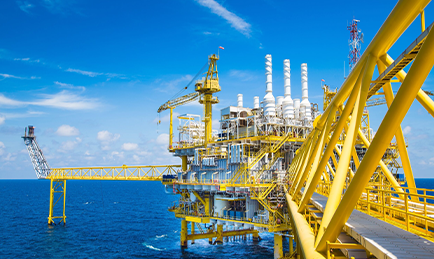- Afrikaans
- Albanian
- Amharic
- Arabic
- Armenian
- Azerbaijani
- Basque
- Belarusian
- Bengali
- Bosnian
- Bulgarian
- Catalan
- Cebuano
- Corsican
- Croatian
- Czech
- Danish
- Dutch
- English
- Esperanto
- Estonian
- Finnish
- French
- Frisian
- Galician
- Georgian
- German
- Greek
- Gujarati
- Haitian Creole
- hausa
- hawaiian
- Hebrew
- Hindi
- Miao
- Hungarian
- Icelandic
- igbo
- Indonesian
- irish
- Italian
- Japanese
- Javanese
- Kannada
- kazakh
- Khmer
- Rwandese
- Korean
- Kurdish
- Kyrgyz
- Lao
- Latin
- Latvian
- Lithuanian
- Luxembourgish
- Macedonian
- Malgashi
- Malay
- Malayalam
- Maltese
- Maori
- Marathi
- Mongolian
- Myanmar
- Nepali
- Norwegian
- Norwegian
- Occitan
- Pashto
- Persian
- Polish
- Portuguese
- Punjabi
- Romanian
- Russian
- Samoan
- Scottish Gaelic
- Serbian
- Sesotho
- Shona
- Sindhi
- Sinhala
- Slovak
- Slovenian
- Somali
- Spanish
- Sundanese
- Swahili
- Swedish
- Tagalog
- Tajik
- Tamil
- Tatar
- Telugu
- Thai
- Turkish
- Turkmen
- Ukrainian
- Urdu
- Uighur
- Uzbek
- Vietnamese
- Welsh
- Bantu
- Yiddish
- Yoruba
- Zulu
api casing sizes
Understanding API Casing Sizes A Key Component in Oil and Gas Production
In the oil and gas industry, API casing sizes play a critical role in the extraction and transportation of hydrocarbons. The American Petroleum Institute (API) has established a standard for casing sizes that ensures uniformity and safety in drilling operations. This article delves into the importance, types, and specifications of API casing sizes, providing a comprehensive overview for professionals in the field.
What is API Casing?
Casing refers to the series of pipes that are installed in a wellbore after drilling to provide structural integrity and isolate different production zones. The API defines several grades and sizes of casing to meet the diverse requirements of drilling and production wells. The size of casing is crucial, as it affects the well's overall integrity and the efficiency of fluid production.
Standardization of Casing Sizes
API casing sizes are standardized to facilitate interoperability among various equipment, components, and companies in the oil and gas sector. The standard sizes are measured in inches and are often categorized in the following manner
1. Outer Diameter (OD) This is the measurement of the casing from the outermost edge to the opposite edge. For example, common API casing sizes include 4.5 inches, 5 inches, and 7 inches in OD. 2. Weight Measured in pounds per foot (ppf), the weight of the casing affects its strength and ability to withstand external pressures. Casing weights can vary widely, catering to different operational needs. 3. Grade The API classifies casing into various grades like H40, J55, K55, L80, P110, and others, based on their yield strength and application suitability. Higher-grade casings, like P110, are favored for deeper wells due to their enhanced strength and durability.
Selecting the Right Casing Size
Choosing the appropriate casing size is essential for the success of drilling operations
. Various factors influence this decision, includingapi casing sizes

- Depth of the Well Deeper wells typically require heavier and stronger casings to bear the increased pressure and temperature. - Formation Characteristics Geological formations vary widely; some may be more unstable or corrosive, requiring specialized casings. - Production Requirements Oil and gas production rates can affect the choice of casing; for instance, high-pressure reservoirs may need stronger casings.
Installation and Compliance
Correct installation of API casing is vital to achieving operational safety and efficiency. Casing must be secured properly to prevent wellbore collapse and to ensure that groundwater layers are protected from contamination. Furthermore, adherence to API specifications and local regulations is mandatory for compliance, ensuring that companies maintain safety standards and operational integrity.
Challenges in Casing Selection and Installation
Despite the clear guidelines provided by API, companies often face challenges in casing selection and installation. Variability in geological formations can make predicting the necessary casing parameters difficult. Additionally, economic factors may influence the choice of casing, leading some companies to opt for cost-effective options that might not meet the necessary standards for specific conditions.
Future Trends in API Casing
The oil and gas industry is continuously evolving, and advancements in technology are leading to innovations in casing materials and installation techniques. New materials designed to be lighter yet stronger are being developed, which may potentially change the dynamics of casing selection. Moreover, the increasing focus on sustainable practices is likely to drive demand for casing that minimizes environmental impact.
Conclusion
API casing sizes are foundational elements in ensuring the efficiency and safety of oil and gas production. Understanding the specifications, making informed selections, and adhering to installation standards are crucial for successful drilling operations. As the industry navigates challenges and embraces technological advancements, the role of API casing will evolve, but its significance in the oil and gas sector will remain steadfast. For professionals in the field, staying updated with API standards and innovations is essential for maintaining operational excellence and safety.
-
Tubing Pup Joints: Essential Components for Oil and Gas OperationsNewsJul.10,2025
-
Pup Joints: Essential Components for Reliable Drilling OperationsNewsJul.10,2025
-
Pipe Couplings: Connecting Your World EfficientlyNewsJul.10,2025
-
Mastering Oilfield Operations with Quality Tubing and CasingNewsJul.10,2025
-
High-Quality Casing Couplings for Every NeedNewsJul.10,2025
-
Boost Your Drilling Efficiency with Premium Crossover Tools & Seating NipplesNewsJul.10,2025







